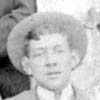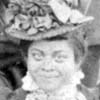Virginia |


|
|
|
Books || Internet Resources |
| Books |
|
Burton, Judith Saunders. A History of Gum Springs, Virginia: A Report of a Case Study of Leadership in a Black Enclave. Ed. D. Dissertation, Vanderbilt University, 1986. An overview of the history of Gum Springs, a Fairfax County community that was founded by West Ford, a former slave of the Washington family. Information was gathered through interviews with residents and investigations of primary and secondary resources. 975.5291 Bur Fairfax County
Chase, John Terry. Gum Springs: The Triumph of a Black Community. Fairfax, Virginia: The Heritage Resources Program of the Fairfax County Office of Comprehensive Planning, 1990. Published by Fairfax County, this history of Gum Springs covers the development of the community and its recent status. 975.5291 Cha Fairfax County Duke, Maurice, ed. Don't Carry Me Back!: Narratives by Former Virginia Slaves. [Richmond, Va.]: Dietz Press, 1995. A collection of previously-published narratives that describe slave life in Virginia. Accompanied by a description of the origins of Virginia slavery. 305.567 Don Ely, James W. The Crisis of Conservative Virginia: The Byrd Organization and the Politics of Massive Resistance. Knoxville : University of Tennessee Press, 1976. Examines the course of desegregation in Virginia from the 1954 Brown decision to the mid-1960s. 379.263 Ely Holton, Woody. Forced Founders: Indians, Debtors, Slaves, and the Making of the American Revolution in Virginia. Chapel Hill: University of North Carolina Press, 1999. Examines the ways in which non-elites, including black slaves, influenced the actions of white gentlemen during the Revolutionary War. 973.311 Hol Immel, William Jebe. The Destruction of Slavery in Northeastern Virginia. M.A. Dissertation, George Mason University, 1994. An account of the events that led to the end of slavery in Alexandria, Fairfax, Prince William and Stafford counties. 326.0975 Imm Jordan, Ervin L. Black Confederates and Afro-Yankees in Civil War Virginia. Charlottesville, Virginia: University Press of Virginia, 1995. Jordan's book examines the ways in which black residents of Virginia participated in the Civil War, describing the experiences of civilian slaves and free blacks, slaves who served as servants to Confederate soldiers, and supporters of both the Confederacy and the Union. 973.7455 Jor Kerr-Ritchie, Jeffrey R. Freedpeople in the Tobacco South: Virginia, 1860-1900. Chapel Hill: University of North Carolina Press, 1999. Looking at the experiences of whites and freed slaves, this book explores the changes in farming and tobacco production that took place in Virginia during Reconstruction and the late 1800s. 975.5004 Ker Krowl, Michelle Ann. Dixie's Other Daughters: African-American Women in Virginia, 1861-1868. Ph.D. Dissertation, University of California, Berkeley, 1998. An examination of the ways in which black women in Virginia interacted with the state government, their work experiences during the Civil War and Reconstruction, and domestic and race relations during Reconstruction. 975.5004 Kro Lassiter, Matthew D. and Lewis, Andrew B., eds. The Moderates' Dilemma: Massive Resistance to School Desegregation in Virginia. Charlottesville: University Press of Virginia, 1998. A series of essays on the massive resistance movement, examining key players and events. 379.263 Mod Leidholdt, Alexander. Standing Before the Shouting Mob: Lenoir Chambers and Virginia's Massive Resistance to Public-School Integration. Tuscaloosa: University of Alabama Press, 1997. Public schools in Norfolk, Virginia were closed for several months as part of the state's massive resistance to federally-ordered school integration. This book examines the role Lenoir Chambers, the editor of the Norfolk Virginian-Pilot, played in advocating an end to this policy. 370.1934 Lei McColley, Robert. Slavery and Jeffersonian Virginia. [n.p.]: University of Illinois Press, 1964. This book explores the question of why slavery flourished during an era in which political opinions and economics seemed to indicate that the institution should be phased out. The author examines the attitudes of the gentlemen of the planter aristocracy to determine how their ideas influenced the rise and spread of the slave system. 326.9755 McC Saillant, John, ed. Afro-Virginian history and culture. New York: Garland Pub., 1999. A group of essays written by scholars using the collections of the Virginia Historical Society and the Library of Virginia. Topics covered include the hiring out of slaves, blacks "passing" as white, African-American churches, and black women and the U. S. Military during the Civil War. 975.5004 Afr Schwarz, Philip J. Migrants against Slavery: Virginians and the Nation. Charlottesville: University Press of Virginia, 2001. Describes the departure of free blacks, slaves and whites from Virginia in order to escape or avoid slavery. Focuses on accounts of specific individuals and groups, with a good general introduction explaining the phenomenon. 306.362 Sch Sweig, Donald. Northern Virginia Slavery: A Statistical and Demographic Investigation. Ph.D. Dissertation, The College of William and Mary, 1982. Sweig explores the development and the history of the slave family in Fairfax and Loudoun counties, using tax records, wills, census records, estate inventories and records from the slave trade to examine naming patterns and migration patterns, among other things. The dissertation concludes that Northern Virginia slave society was conducive to the formation of families. 326.0975 Swe Sweig, Donald, ed. "Registrations of free Negroes commencing September court 1822, book no. 2", and "Register of free Blacks 1835, book 3": Being the Full Text of the Two Extant Volumes, 1822-1861, of Registrations of free Blacks Now in the County Courthouse, Fairfax, Virginia. Fairfax, Virginia: History Section, Office of Comprehensive Planning, Fairfax, Virginia, 1977. Information reproduced from two Fairfax County registers of blacks either born free or manumitted. Each entry provides a physical description of the person and states how his or her free status was obtained. 929.3 Swe Fairfax County Takagi, Midori. Rearing Wolves to Our Own Destruction: Slavery in Richmond, Virginia, 1782-1865. Charlottesville: University Press of Virginia, 1999. Describes the experiences of slaves working in living in Richmond, who were often hired out and worked to support the city's industrial economy. This developed into a situation where slaves lived away from their masters, developed communities and enjoyed more autonomy than their counterparts who worked in the fields. 306.362 Tak Wolf, Andrew M. D. Black Settlement in Fairfax County, Virginia during Reconstruction. Fairfax, Virginia: [s.n.], 1975. Examines the settlement patterns of freed African-Americans in Fairfax County after the Civil War. 975.5291 Wol Fairfax County Zaborney, John Joseph. Slaves for Rent: Slave Hiring in Virginia. Ph.D. Dissertation, University of Maine, 1997. In his doctoral dissertation, Zaborney looks at the practice of slave hiring in Virginia and describes how it worked in both urban and rural environments, how it affected both male and female slaves, and how Virginia's economy contributed to the practice. 326.0975 Zab |
| Internet Resources |
|
Black History Museum and Cultural Center of Virginia
Located in Richmond, this museum aims to collect and preserve artifacts and records that pertain to African-American history in Virginia. The web site has information about current and recent exhibits. Virginia Black History Archives A project of the Special Collections and Archives section of the James Branch Cabell Library at Virginia Commonwealth University. The archives includes collections of twentieth century materials that focus on Richmond and central Virginia, and the web site presents exhibits from these collections. |
| Guide to African-American Resources || Special Collections Home |